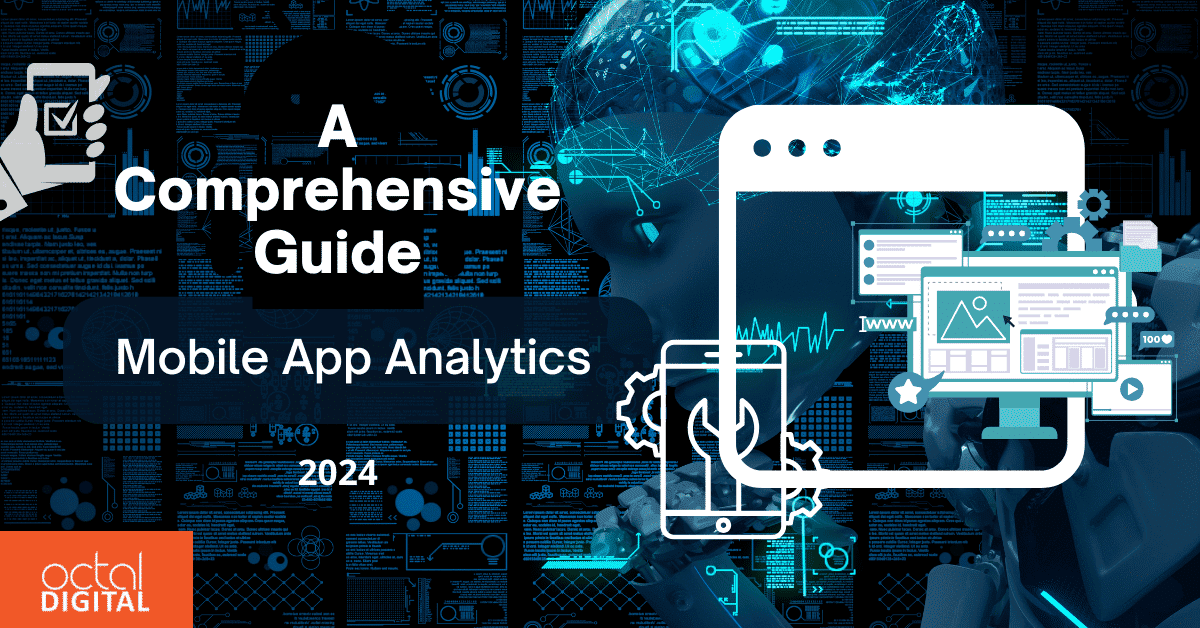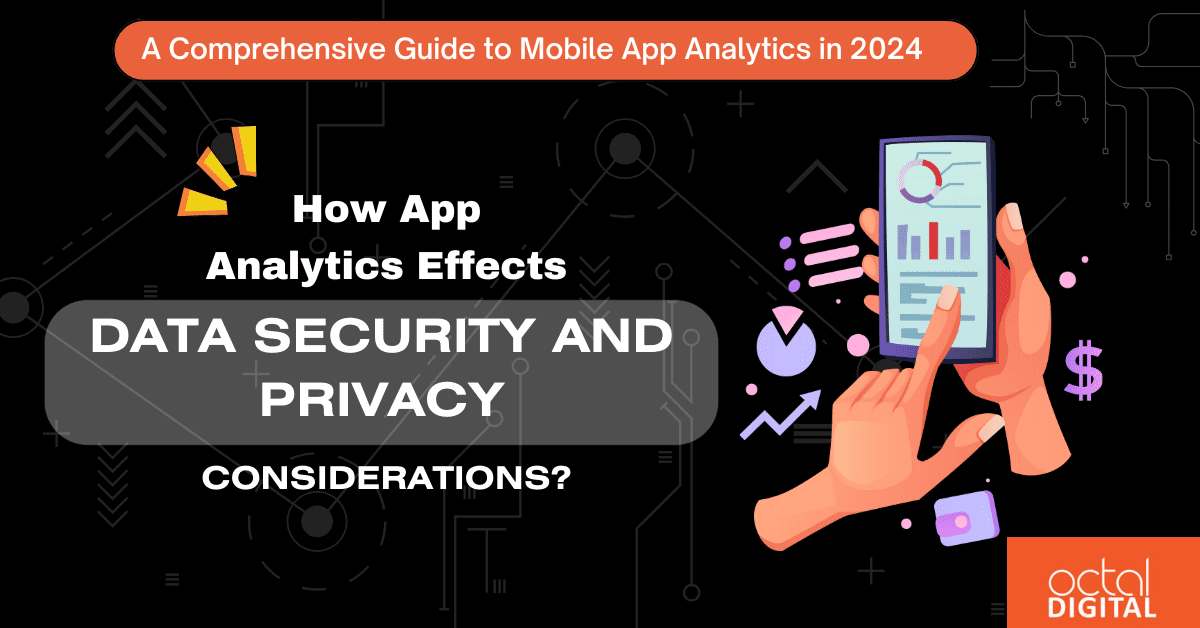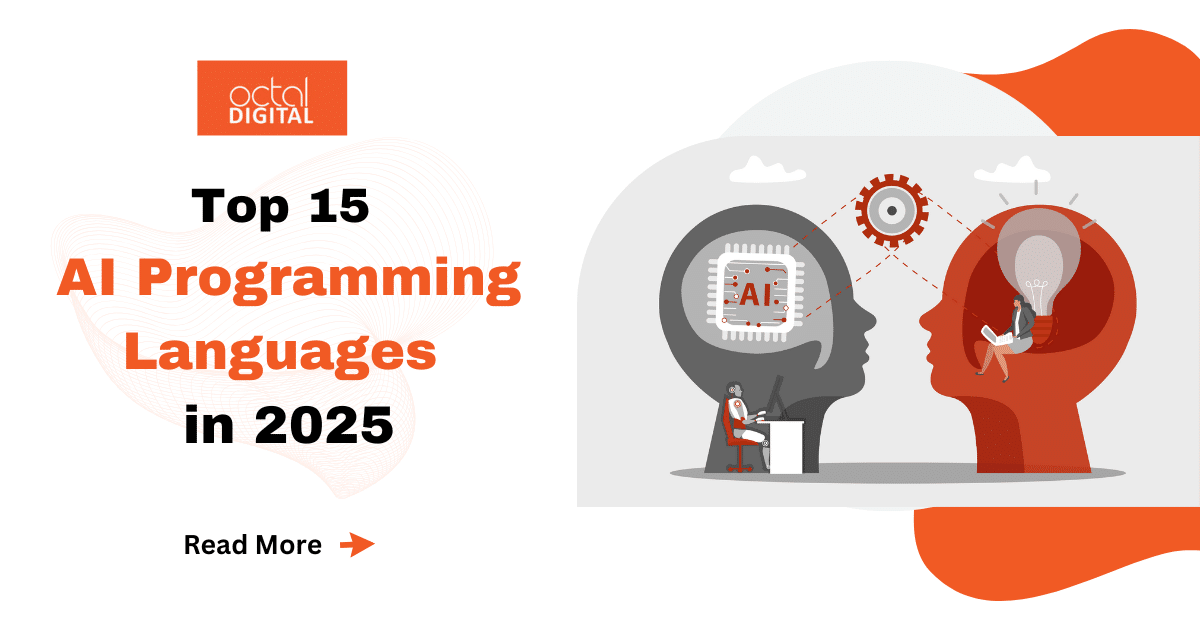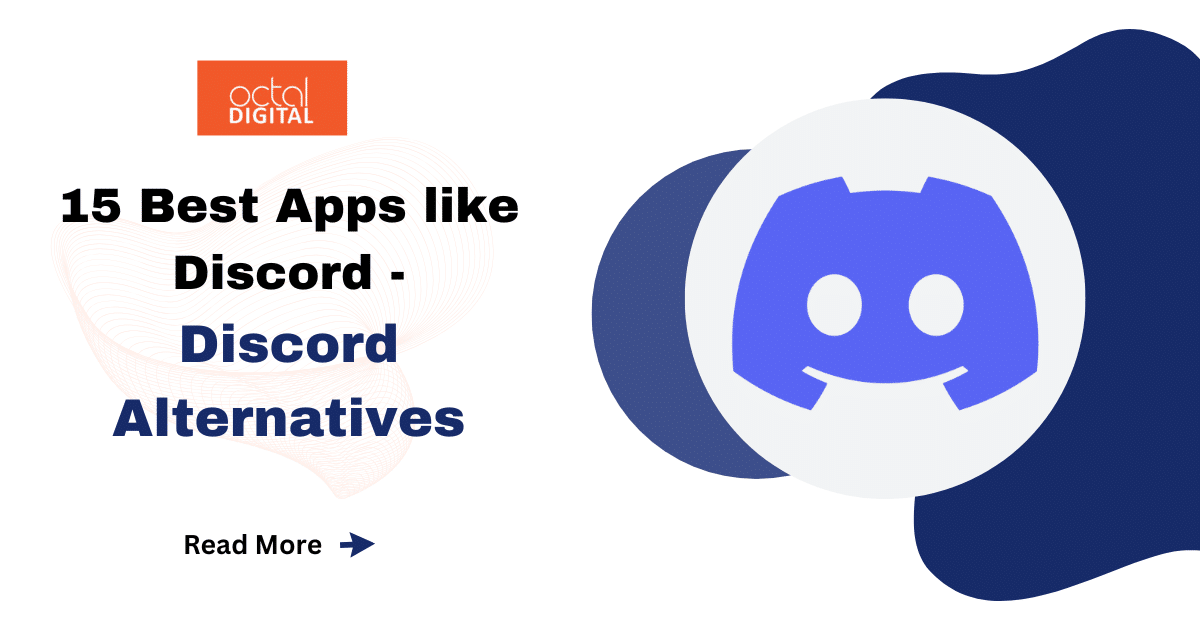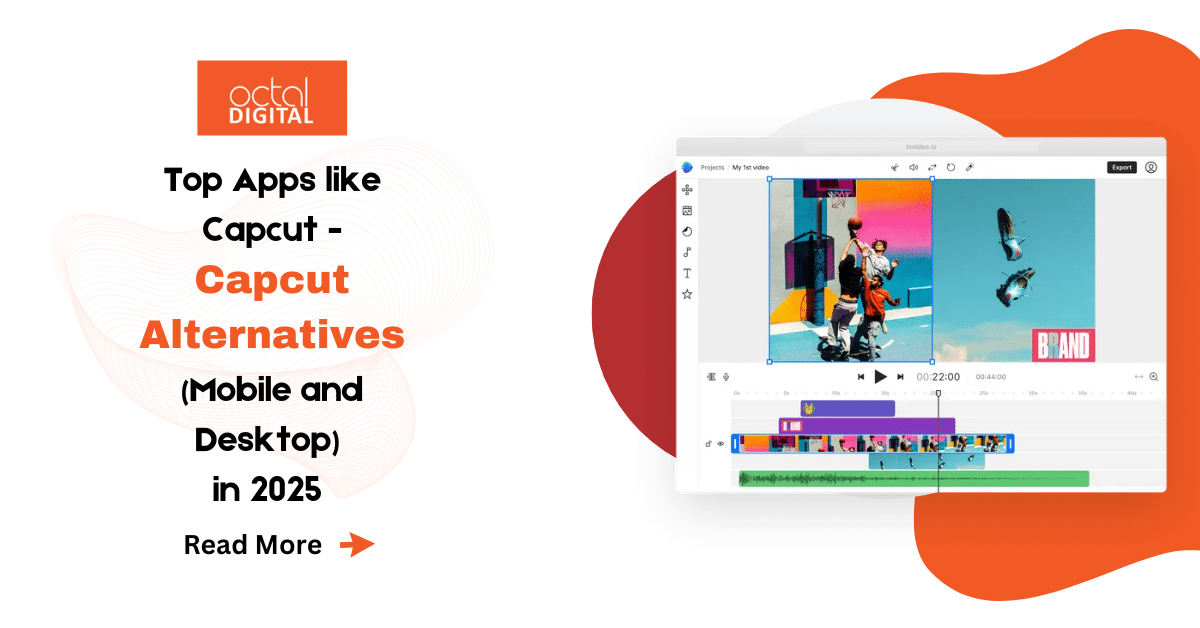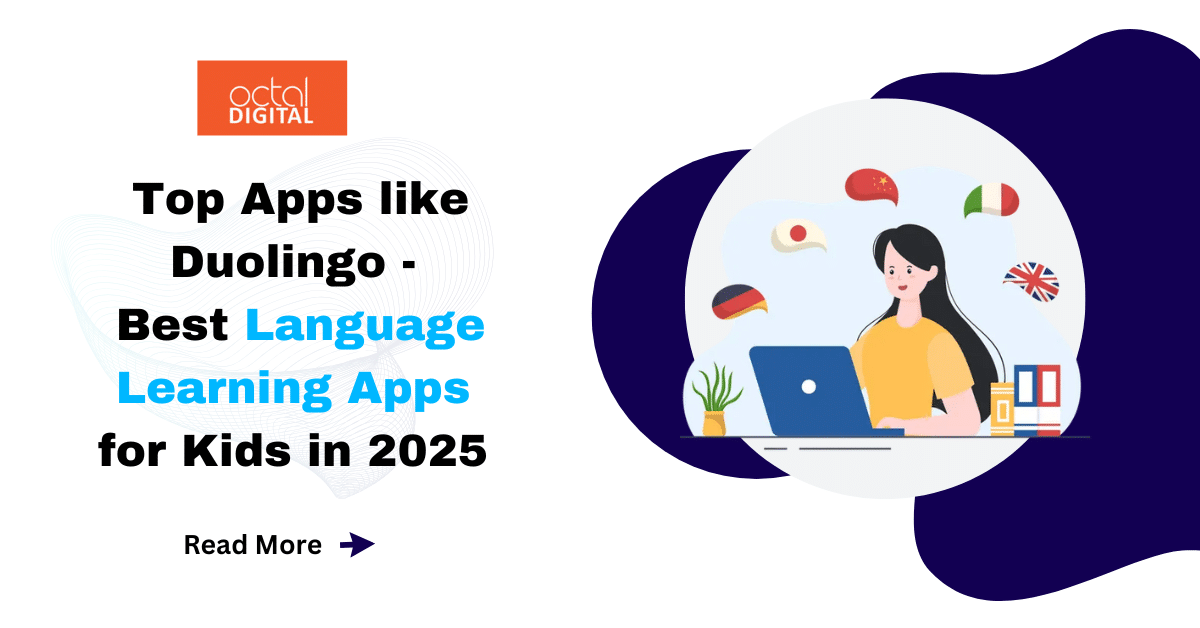In the rapidly changing landscape of mobile applications, app analytics play a crucial role in scalability and security, while delivering a seamless and engaging app experience is paramount. App analytics becomes the guiding tool, providing valuable insights for strategic decision-making and enhancing user satisfaction. This guide is crafted to help you understand the intricate layers of app analytics, from foundational principles to advanced methodologies.
Let’s now dive into this blog explaining the essential role of analytics in optimizing performance and user experiences.
Table of Contents
ToggleThe Foundation of App Analytics
Setting the stage for App Analytics emphasizes its crucial role in the development lifecycle. App analytics is not just a tool but a strategic asset, driving data-driven decision-making to optimize every aspect of the application for performance and user experience.
While the concept of measuring data stretches back centuries, the field of mobile app analytics emerged only recently after the smartphone revolution. Following the iPhone’s 2007 launch, 2008 saw the arrival of Flurry Analytics, one of the pioneers in this domain. The subsequent years witnessed rapid growth, with players like Localytics, Mixpanel, and App Annie offering diverse data visualizations and analytical capabilities. Shortly thereafter, industry titans like Google and Apple entered the analytics industry with their own dedicated platforms, while Facebook seamlessly integrated app analytics into its advertising ecosystem.
Today, the approach has shifted from basic tracking towards sophisticated user segmentation, predictive analysis, and machine learning-powered insights. The whole user analytics revolution also strengthened new compliances like GDPR and CCPA, demanding a heightened focus on data security and user consent. Despite these challenges, the need for deeper app understanding continues to grow, with open-source tools and innovative technologies like artificial intelligence sniffing out exciting new possibilities. To grasp the foundation of app analytics, it’s essential to understand its core principles. App analytics involves collecting, processing, and interpreting user data to derive actionable insights, and tracking metrics and events like user interactions, navigation paths, and feature usage.
Incorporating analytics into app development goes beyond basic metrics. It aims to gain insights into user behavior, identify pain points in the user journey, and optimize features based on data-driven decisions. Analytics acts as a guide, guiding developers and businesses to build apps that align with user preferences and expectations.
App Analytics: How Data Collection and Integration Works
Diving into app analytics requires a comprehensive understanding of data collection and integration tools. Let’s explore the methodologies and tools employed to gather and integrate data seamlessly into the app development lifecycle.
Data collection methods range from basic app analytics tracking to more sophisticated approaches, such as event tracking and user feedback mechanisms. Various tools, including analytics SDKs (Software Development Kits), are employed to capture data on user interactions, system performance, and other relevant metrics. Detailed exploration will cover aspects like custom events, tracking parameters, and the selection of appropriate tools based on project requirements.
Choosing the Right Metrics for In-App Analytics
To measure the effectiveness of in-app analytics, it’s crucial to choose metrics that align with specific business goals. This section emphasizes the importance of identifying and understanding key performance indicators (KPIs) and their relevance in the context of app analytics.
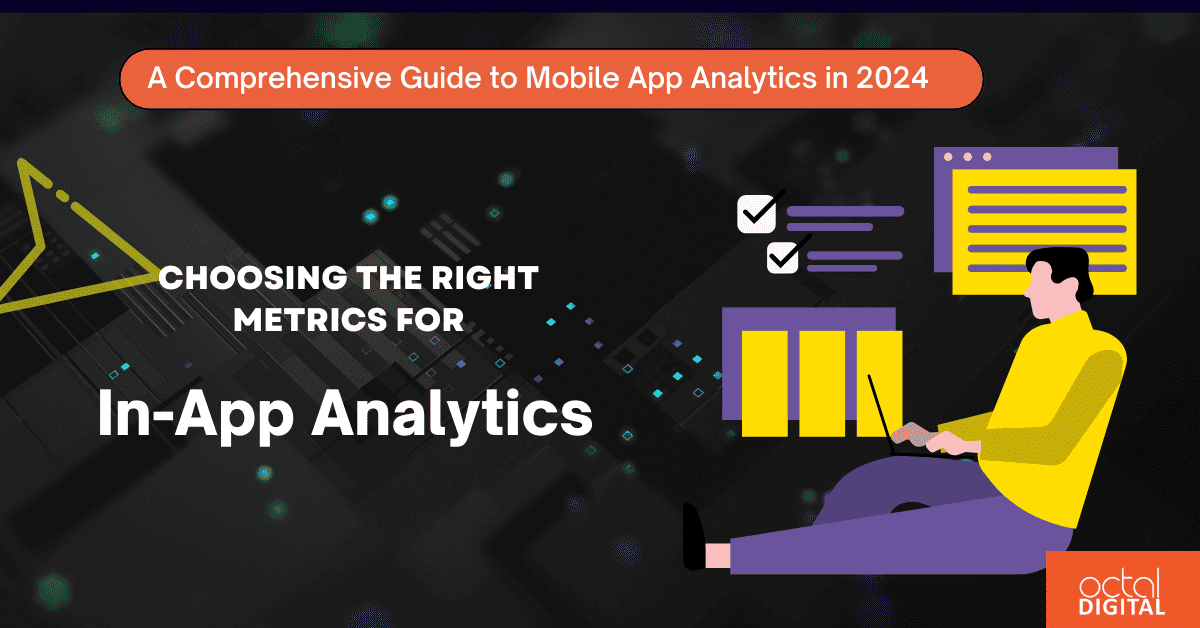
Strategic Significance of KPIs:
- Performance Evaluation: KPIs are vital for evaluating the performance of a mobile app. By focusing on specific metrics, businesses can gain insights into how well the app aligns with its intended goals and objectives.
- Goal Alignment: KPIs serve as a direct link to business goals. They provide a measurable way to assess progress toward objectives such as user acquisition, revenue generation, and customer satisfaction. This alignment helps in strategic decision-making.
- App Health Assessment: KPIs offer a nuanced understanding of the app’s overall health. By tracking user engagement, retention rates, conversion funnels, and revenue generation, businesses can assess whether the app is thriving or requires adjustments.
- Tailored Identification: The precision in measurement comes from identifying KPIs that are tailored to the unique objectives of the business. This ensures that the metrics chosen are directly relevant to what matters most for the app’s success.
- Focus on Critical Aspects: Each selected KPI acts as a compass point, directing attention to critical aspects of app performance. User engagement, retention rates, conversion funnels, and revenue generation are essential components that contribute to the overall success of the app.
- Comprehensive Understanding: User-centric KPIs provide a comprehensive understanding of user behavior, preferences, and interactions. Metrics like user acquisition cost, customer lifetime value, and churn rates go beyond generic measures, offering insights into the app’s resonance with its user base.
- Strategic Decision Support: Understanding user-centric KPIs enables businesses to make strategic decisions that enhance the user experience, increase user retention, and maximize the app’s value to its audience.
- Adaptation to Change: The dynamic nature of the app analytics landscape requires an iterative approach to metric selection. Regular refinement based on evolving goals, industry trends, and user expectations ensures that KPIs remain relevant and aligned with the changing business environment.
- Continuous Improvement: Iterative refinement supports continuous improvement by allowing businesses to stay agile and responsive to emerging challenges and opportunities in the app market.
- Holistic Appraisal: The integration of technical metrics provides a holistic appraisal of app performance. Beyond user-centric KPIs, technical metrics such as app load times, error rates, and API response times offer insights into the app’s functionality and user experience.
- Balanced Perspective: Balancing user-centric and technical metrics ensures that businesses address both functional and performance aspects, contributing to a well-rounded understanding of the app’s overall effectiveness.
Imagine your dream mobile app, captivating users and propelling your business forward. Octal Digital makes it a reality. Our tailored solutions resonate with your vision, fueled by a passion for innovation and a laser focus on client success. Join the mobile revolution, and partner with the best!
Top Mobile App Analytics Tools (2024)
This section takes a direct look at famous mobile app analytical tools, discussing their features and functions to understand their suitability for specific analytics needs in mobile app development.
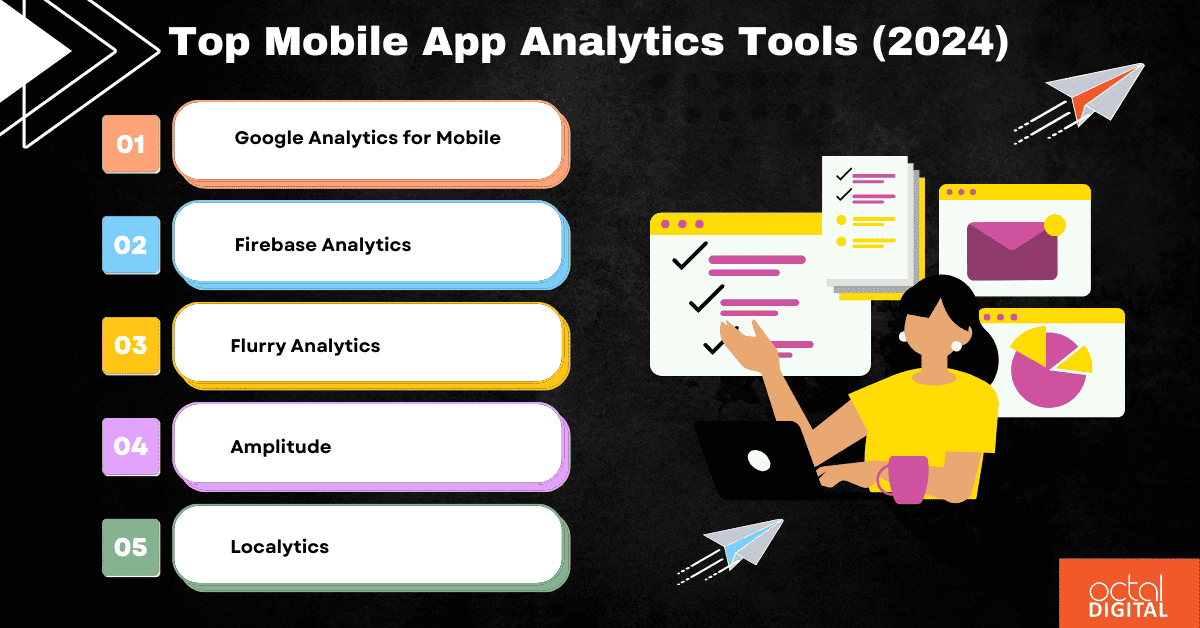
A) Google Analytics for Mobile:
- Purpose: Comprehensive mobile app analytics.
- Key Features: User Tracking, Event Tracking, Demographics, Conversion Tracking, Real-time Reporting.
B) Firebase Analytics:
- Purpose: Real-time insights for mobile and web applications.
- Key Features: User Attribution, In-app Events, User Segmentation, Integration with Firebase Services, Predictive Analytics.
C) Flurry Analytics:
- Purpose: Mobile analytics and advertising platform.
- Key Features: User Retention, Performance Monitoring, Custom Event Tracking, Demographic Analysis, Ad Monetization Analytics.
D) Amplitude:
- Purpose: Product analytics for web and mobile applications.
- Key Features: Behavioral Analytics, Cohort Analysis, A/B Testing, Retention Analysis, Personalized Messaging.
E) Localytics:
- Purpose: In-app analytics for marketing and app analytics.
- Key Features: User Segmentation, Push Notification Tracking, User Journeys, Funnel Analysis, and Performance Metrics.
These mobile app analytics tools offer a rich set of features for app developers, marketers, and analysts to gain valuable insights into user behavior, optimize user experiences, and drive app success. The choice among these tools depends on specific business requirements, the scale of analytics needed, and integration capabilities with the existing app infrastructure.
Learn valuable tips for regular updates and monitoring to ensure optimal performance. Explore Octal Digital’s blog page and explore the latest tech trends!
Understanding User Behavior with App Analytics
Understanding user behavior is at the core of effective app analytics. User behavior analysis provides insights on interpreting user actions, which can be leveraged for continuous improvement and enhancement of the app.
-
Informed Decision-Making:
Understanding user behavior provides a solid foundation for informed decision-making. Developers and product teams can prioritize features, improvements, and optimizations based on real user interactions.
-
Enhanced User Experience (UX):
Analyzing user behavior helps identify pain points and areas of improvement in the app’s user interface and experience. This leads to targeted enhancements that contribute to overall user satisfaction.
-
Optimized User Flows:
By analyzing user journeys and funnels, teams can identify bottlenecks and optimize user flows. This leads to a smoother navigation experience, reducing drop-offs and improving conversion rates.
-
Improved Retention Rates:
User behavior analysis allows for the identification of factors influencing user retention. Armed with this information, developers can implement strategies to enhance user engagement and loyalty, ultimately improving retention rates.
-
Effective Feature Prioritization:
Prioritizing features based on user behavior ensures that development efforts align with user needs and preferences. This prevents the allocation of resources to less impactful features and maximizes the app’s overall value.
-
Personalization Opportunities:
Segmentation and analysis of user behavior enable personalized user experiences. Developers can tailor content, recommendations, and interactions based on specific user segments, leading to increased user satisfaction and engagement.
-
Quantifiable Impact of Changes:
A/B testing and continuous monitoring enable teams to quantifiably measure the impact of changes or new features. This data-driven approach ensures that modifications are beneficial and align with user expectations.
-
Proactive Issue Resolution:
User behavior analysis allows for the early detection of issues or bugs. By monitoring user interactions and feedback, teams can proactively address problems before they escalate, maintaining a positive user experience.
-
Strategic Marketing and Acquisition:
Understanding how users discover and engage with an app helps in refining marketing strategies. Teams can focus efforts on channels and campaigns that attract users with behaviors indicative of higher engagement and conversion rates.
-
Continuous Improvement:
User behavior analysis is an iterative process. Regular analysis provides a feedback loop for ongoing app improvement. By consistently refining based on user interactions, the app can evolve to meet changing user expectations and industry trends.
Read Our Latest Blog: Blockchain in Healthcare: Transforming Security and Transparency in Apps 2024
How App Analytics Effects Data Security and Privacy Considerations?
App analytics play a crucial role in data security and privacy considerations by providing insights, monitoring, and tools to ensure that user data is handled in a secure and compliant manner. Here’s how app analytics contribute to data security and privacy:
-
Monitoring Data Access and Usage:
App analytics platforms often include features that allow developers and administrators to monitor who accesses the analytics data and how it is used. This monitoring helps in identifying any unauthorized access or suspicious activities, contributing to data security.
-
Anomaly Detection:
Advanced analytics tools can employ anomaly detection algorithms to identify unusual patterns or deviations in data access and usage. This can help in quickly spotting potential security breaches or unauthorized access to sensitive information.
-
Data Encryption:
Many analytics platforms implement robust encryption mechanisms to secure data during transmission and storage. This ensures that sensitive information remains confidential and protected from unauthorized access.
-
User Consent Management:
App analytics tools often include features for managing user consents and permissions. This is crucial for complying with data protection regulations (such as GDPR) and ensuring that user privacy preferences are respected.
-
Data Minimization and Retention Policies:
Analytics tools enable organizations to define data minimization policies, ensuring that only essential data is collected. Additionally, they assist in implementing data retention policies to automatically delete or anonymize user data after a specified period, reducing the risk of data exposure.
-
Compliance Reporting:
Analytics platforms may offer reporting features that help organizations demonstrate compliance with data protection regulations. This includes providing audit trails, documenting consent management, and offering tools for generating compliance reports.
-
Secure APIs and Integrations:
App analytics often involve integrations with other services and APIs. Ensuring the security of these integrations is crucial for preventing data leaks. Analytics platforms may provide guidelines and best practices for secure API usage.
-
Identity and Access Management (IAM):
Implementing strong IAM practices ensures that only authorized individuals have access to analytics data. This includes role-based access control, two-factor authentication, and other security measures to safeguard sensitive information.
-
Incident Response and Forensics:
Analytics tools can assist in incident response by providing forensic data in the event of a security incident. This helps in understanding the nature of the incident, identifying affected users, and implementing corrective measures.
-
Regular Security Audits:
App analytics platforms often undergo regular security audits and assessments to identify and address vulnerabilities. This proactive approach contributes to maintaining a secure environment for handling user data.
By leveraging app analytics responsibly and integrating security measures into the analytics process, organizations can enhance data protection, respect user privacy, and comply with regulatory requirements. This approach is essential for building and maintaining trust with users and stakeholders.
Read More: WordPress vs Wix – Which Is The Best CMS 2024?
Future Trends in App Analytics
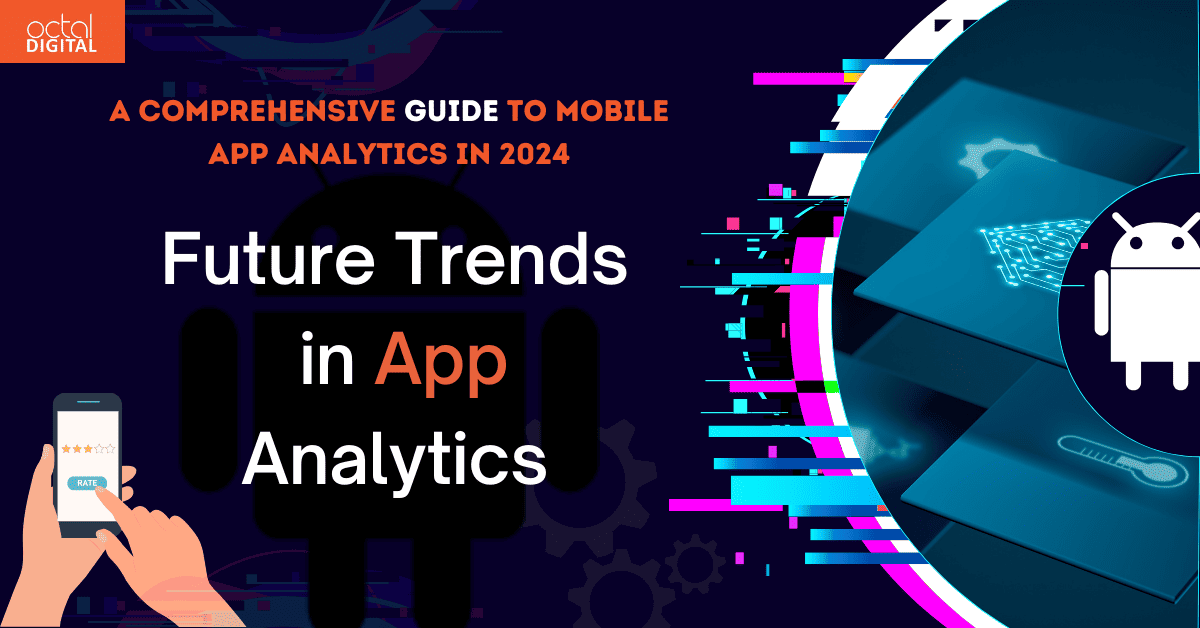
Here are some insights into potential future trends in app analytics:
- AI and Machine Learning Integration: Increasing integration of AI and machine learning for advanced analytics. Predictive analytics, anomaly detection, and personalized insights are likely to become more prevalent.
- Cross-Platform Analytics: Growing demand for analytics solutions that offer a holistic view of user behavior across multiple platforms and devices. This includes mobile apps, web applications, and other digital touchpoints.
- Privacy-First Analytics: With growing concerns about data privacy, there’s a trend towards privacy-first analytics. Solutions that prioritize user consent, anonymization, and compliance with data protection regulations are likely to gain prominence.
- Real-Time Analytics: Enhanced real-time analytics capabilities, allowing businesses to make immediate data-driven decisions. This trend is driven by the need for agility and responsiveness in a rapidly changing digital landscape.
- Augmented Analytics: The integration of augmented analytics, combining machine learning and natural language processing to simplify data analysis. This trend aims to make analytics tools more accessible to a broader range of users.
- Quantum Computing Impact: As quantum computing advances, there may be implications for app analytics, particularly in handling large-scale data processing and complex algorithms, enabling more sophisticated analyses.
- Voice Analytics: The rise of voice-activated interfaces and applications will likely lead to increased interest in voice analytics. Understanding user interactions through voice commands can provide valuable insights.
- Advanced User Segmentation: Evolution of user segmentation techniques, incorporating more sophisticated criteria and AI-driven insights for highly targeted and personalized analytics.
- Blockchain for Data Integrity: Increased adoption of blockchain technology to ensure the integrity and security of analytics data. Blockchain can provide a decentralized and tamper-proof ledger for tracking data transactions. Growing use of behavioral analytics not only for user experience but also for cybersecurity. Analyzing user behavior patterns to detect and prevent security threats and unauthorized access.
Conclusion:
In conclusion, this guide underscores the pivotal role of app analytics in successful development. From foundational principles to advanced strategies, it equips developers and businesses to optimize app performance and user experiences. Key takeaways stress the strategic importance of data-driven decision-making, aligned metrics, A/B testing, and prioritizing data security. Continuous improvement, feedback loops, and agile methodologies are crucial for app optimization. Effective data visualization and anticipation of future trends are emphasized. As technology evolves, this guide serves as a compass, empowering stakeholders to navigate complexities and proactively shape the future of app development.
If you’re in search of a trusted mobile app development company in Houston, the developers’ team at Octal Digital stands out for their expertise in crafting tailored solutions that resonate with your business objectives. Elevate your digital presence and engage your audience with an innovative and client-focused approach to mobile app development.
FAQs
1. What is app analytics, and why is it crucial for mobile app development?
App analytics involves the collection, analysis, and interpretation of data generated by users interacting with a mobile application. It is crucial for mobile app development as it provides insights into user behavior, helps in optimizing app features, and contributes to data-driven decision-making, ultimately enhancing user experiences and app performance. Octal Digital crafts tailored solutions foriOS app development that resonate with your business, boosting your digital presence and engaging your audience. Don’t settle for less, choose expertise and innovation.
2. How can I choose the right metrics for app analytics?
Choosing the right metrics involves aligning them with specific business goals. Identify key performance indicators (KPIs) that directly contribute to the success of your app, such as user engagement, retention rates, conversion rates, and user satisfaction. The significance lies in selecting metrics that provide actionable insights relevant to your app’s objectives.
3. What are the best practices for ensuring data security and user privacy in-app analytics?
Ensuring data security and user privacy is paramount. Best practices include implementing encryption, secure data storage, and access control measures. Additionally, adhere to data protection regulations, craft clear privacy policies, and obtain user consent. Building and maintaining user trust through ethical data practices is crucial.
4. How can A/B testing benefit app development, and what are some successful examples?
A/B testing involves comparing different versions of a feature to determine which performs better. It benefits app development by providing empirical data on user preferences. Successful examples include optimizing in-app purchases, refining user interfaces, and enhancing push notification strategies based on real user responses.
5. What role does continuous improvement play in-app analytics?
Continuous improvement involves a proactive approach to refining app features based on data-driven insights. It fosters a culture of learning, adaptation, and evolution within development teams. By incorporating feedback loops and embracing agile methodologies, app developers can iteratively enhance the app’s performance and user experience.
